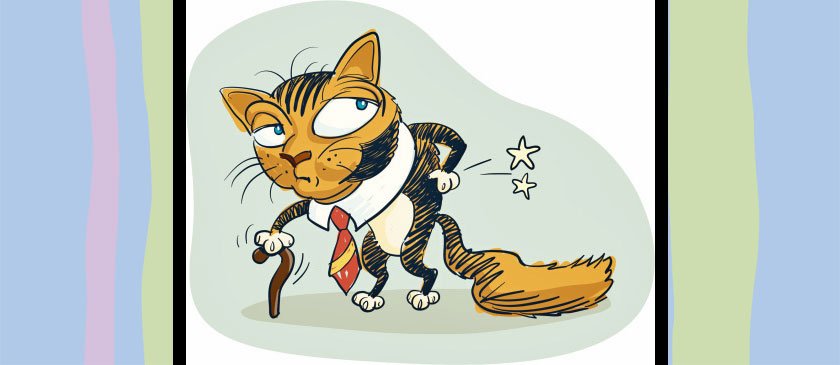A discussion on the various aspects of feline perception of pain. It seems strange to write it, but there was a time when experts and some veterinarians believed that cats did not feel pain. It is hard to believe today. But cats have the same receptors in their skin and their bodies as humans. Receptors in the skin pick up stimuli from the outside which impinge upon the cat. The nerve impulses are transmitted to the brain.

Laboratory experiments clearly indicate that when a cat is in pain or stressed there are changes in electrical signals and increases in hormone levels indicating that the cat is in pain. Also, on a simple observational level we know that cat feels pain because they will pull away from something which is causing pain, much as we do, or become instantly aggressive.
Endorphins
There is another aspect to feline perception of pain which is that your cat releases large amounts of natural painkillers called endorphins into his blood stream when he feels pain.
The cat’s endorphin-producing system is more efficient than ours and in many other animals. Endorphins mask the pain and if the pain is at moderate levels they allow the cat to continue his activities. The pain-masking endorphins also allow the cat to avoid attracting the attention of rivals or predators.
In the home, it can be difficult for a cat guardian to notice that their cat is in pain. In contrast, dogs, being social animals whine to attract the attention of their companions.
[Endorphins are neurotransmitters. They are a brain chemical. They help to transmit electrical signals within the nervous system. They are released under stress and pain. They react with opiate receptors in the brain which reduces pain perception acting similarly to morphine and codeine.]
Pain-induced Aggression
Cats demonstrate what is called “pain-induced aggression”. Pain results in aggression from the cat. This is often seen in households if, for example, somebody mishandles the cat. The cat might turn on the person aggressively. This is defensive aggression. Humans do the same thing but perhaps not to the same level. Picking up cats that might be in pain should be done with caution.
Cats versus Dogs
In respect of pain perception, we are now also more aware of the difference between cats and dogs. At the time when people believed that the cat did not feel pain they understood that dogs did in fact feel pain because they could observe clear signs that were understood. The differences in behavior of the cat and dog is because the cat is essentially a solitary animal (although adopting to communal life) whereas the dog lives in a pack and can openly show his emotions to other members of the pack expecting support from them. Cats do not have this luxury and therefore their mentality is to hide symptoms of pain because to show them would jeopardize survival.
A veterinarian will be able to assess whether a cat is in pain by palpating, feeling inside the body, and observing the reaction of the cat. In addition the cat may demonstrate posture and gait abnormalities which indicate he is in pain.
Temperature Sensitivity
Another aspect of feline perception of pain relates to temperature sensitivity. A cat’s paw is relatively insensitive to what we would consider to be low and high temperatures and which would cause a reaction in us.
Sarah Hartwell who has worked at Cats Protection in Chelmsford reports that pet owners would bring to her cats who had singed coats because they had been resting near a fire. The cat is very tolerant of high temperatures. Whereas people feel discomfort when their skin temperature reaches 112°F or 44°C, cats do not show signs of discomfort until their skin temperature reaches 126°F or 52°C. I suppose, too, in this instance, the coat provides insulation to the skin. The temperature at the coat is hotter than at the surface of the skin.
Finally, the educated cat guardian realizes that cats feel emotional pain like us. Cats do pine sometimes when a companion human or animal dies and it is believed that cats grieve. Cats might demonstrate depression, withdraw and loss of appetite at this time.
Notes:
- Jo Singer wrote an article about this some time ago which you can read here. This is a follow-up to expand on the subject.
- (My thanks to Sarah Hartwell and Rebecca Watson (The Cat Expert) for prompts on this subject.)
